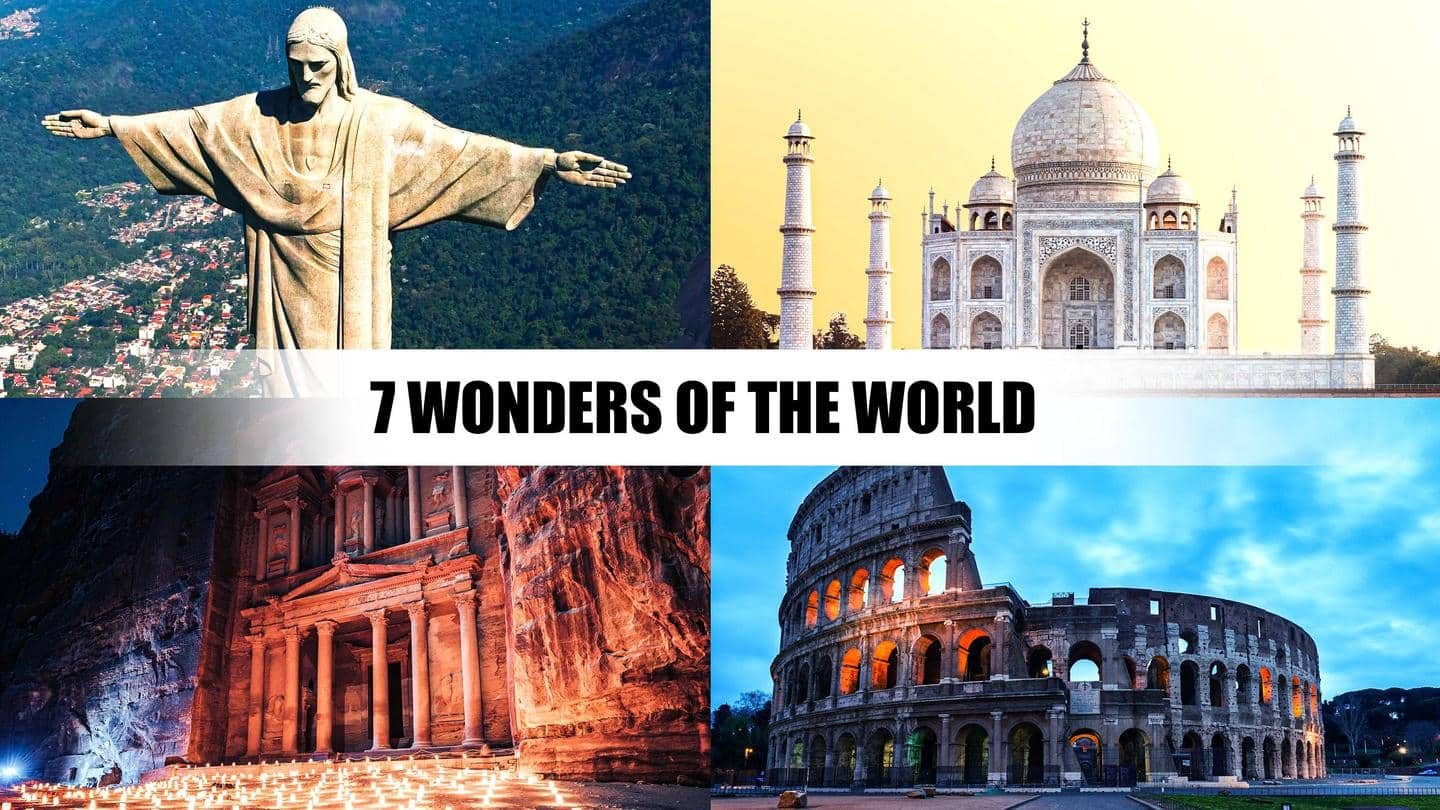
Exploring the New Seven Wonders of the World
What's the story
The New Seven Wonders of the World was a campaign launched in 2000 to select seven wonders from 200 existing monuments.
The popularity poll was initiated by Canadian-Swiss Bernard Weber and organized by the New 7 Wonders Foundation in Zurich, Switzerland.
Notably, the final results were announced in 2007 in Lisbon.
Read on to know more about the New Seven Wonders of the World.
#1, 2
Great Wall of China; Chichén Itzá
Great Wall of China is a series of fortifications and is one of the largest building-construction projects worldwide. It is about 8,850 kilometers long and the construction began in the 7th century BCE and continued for two millennia.
Chichén Itzá is a huge pre-Columbian city constructed by the Mayan people of the Terminal Classic period. The site is situated in the Yucatan State, Mexico.
#3
Petra
Petra is an ancient city in a remote valley of southern Jordan. It is said the area around Petra was inhabited around 7,000 BC, and the access to the city is through a 1.2-kilometer-long valley known as Siq, which leads directly to Khazneh.
Petra is also known as the Rose City because of the color of the stone from which it is carved.
#4
Machu Picchu
Machu Picchu is located in the Eastern Cordillera of southern Peru on a 7,970ft mountain ridge.
Several archaeologists have said that it was built as an estate for the Inca emperor Pachacuti around AD 1450 and then abandoned after a century at the time of the Spanish conquest.
Machu Picchu was declared a UNESCO World Heritage Site in 1983.
#5
Taj Mahal
The Taj Mahal is one of the most beautiful pieces of architecture across the globe.
The history behind the magnificent creation also holds a tale of love.
Taj Mahal is situated in Agra, a city in the Indian state of Uttar Pradesh.
It was commissioned in 1632 by Mughal emperor Shah Jahan as proof of his love for his departed wife Mumtaz Mahal.
#6
Colosseum
The Colosseum is an oval-shaped amphitheater present in the center of Rome in Italy.
Its construction started under Emperor Vespasian in AD 72 and it was completed by his successor, Titus, in AD 80.
It is the largest amphitheater in the world with a capacity to host about 80,000 spectators.
In ancient times, it was used for gladiatorial contests like mock sea battles.
#7
Christ the Redeemer
Christ the Redeemer is a widely popular work of art in Brazil. It is an Art Deco statue of Jesus Christ.
Standing 38 meters tall, the statue was built as a symbol of Brazilian Christianity.
It was formed by French sculptor Paul Landowski and built by Brazilian engineer Heitor da Silva Costa, in collaboration with French engineer Albert Caquot.